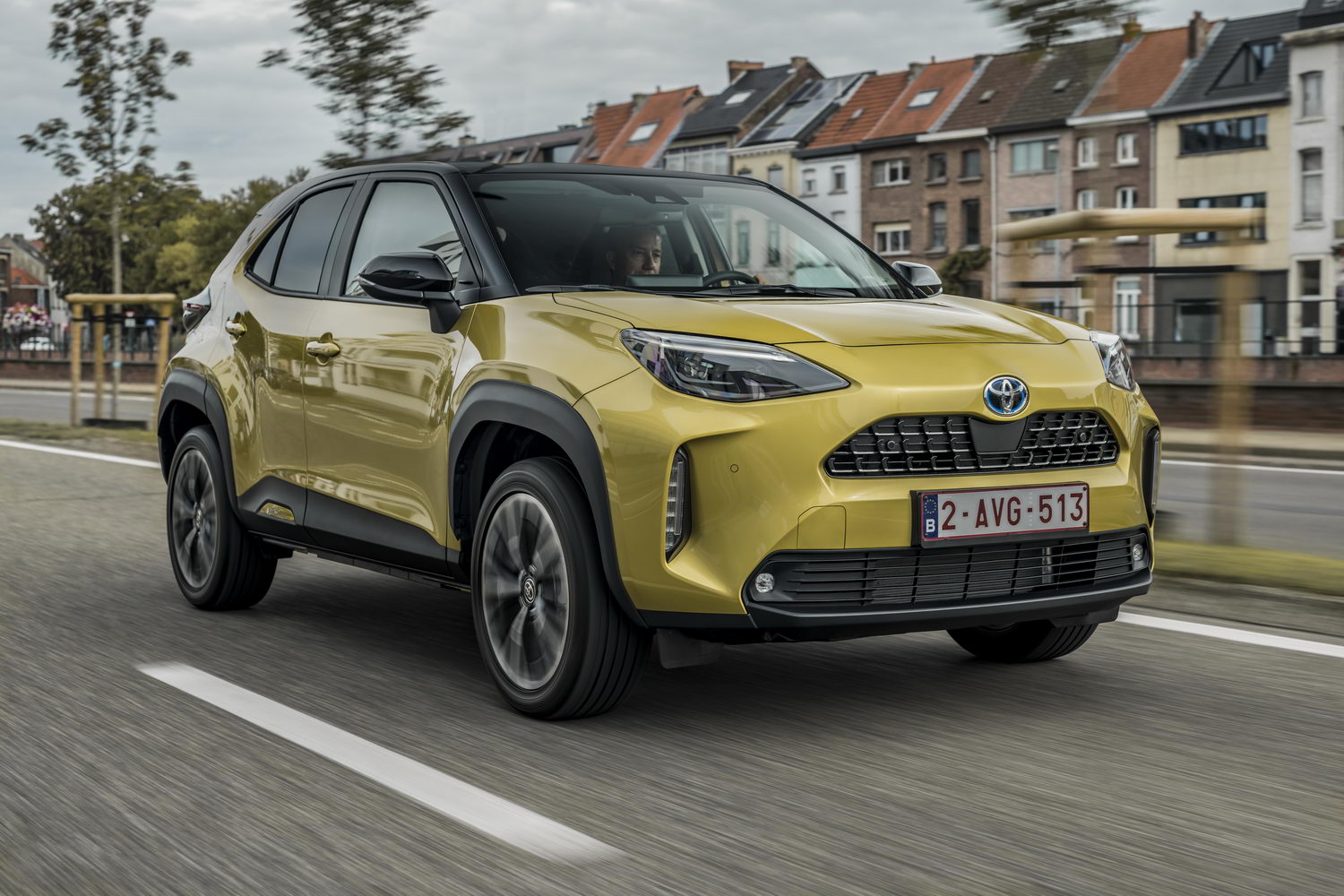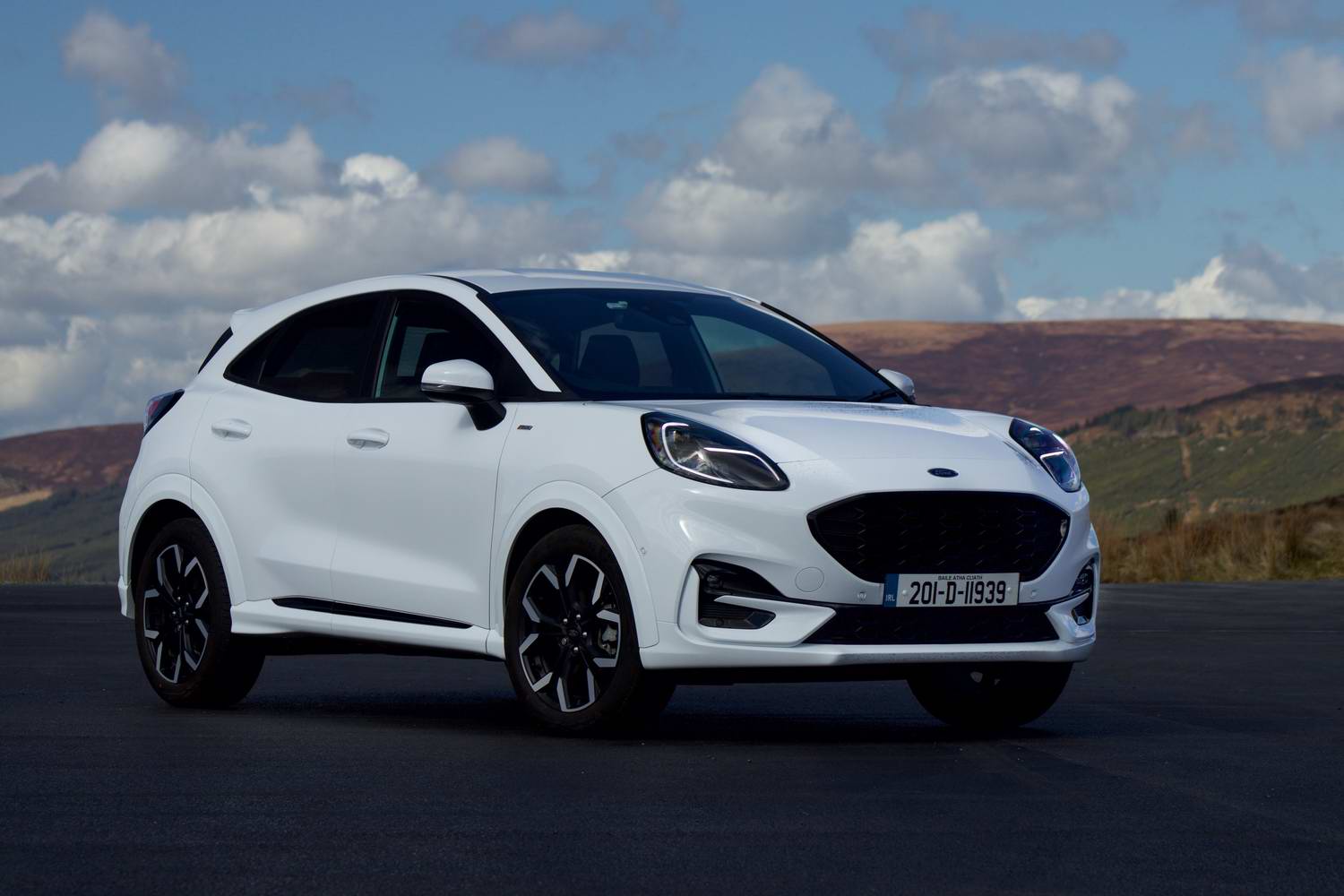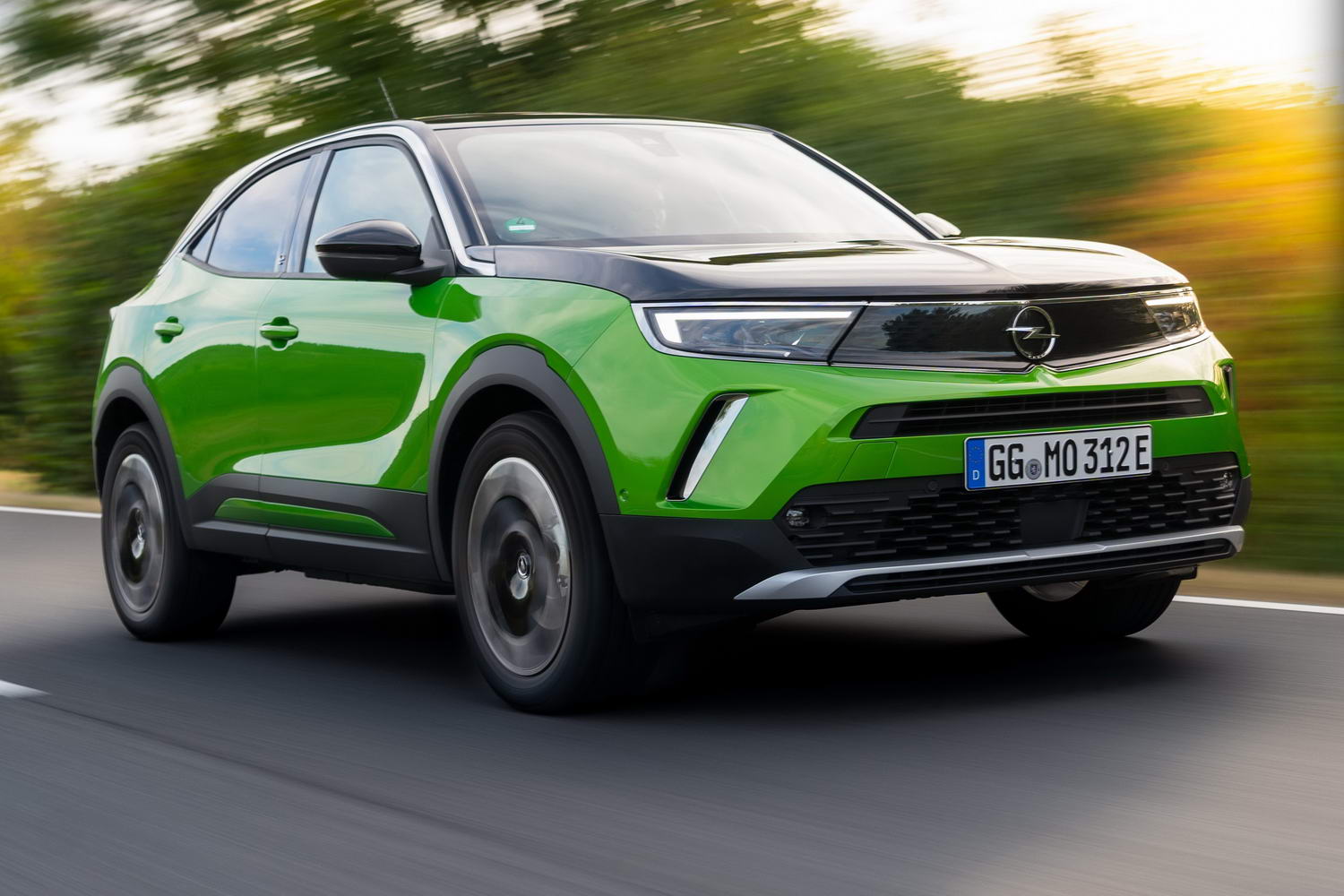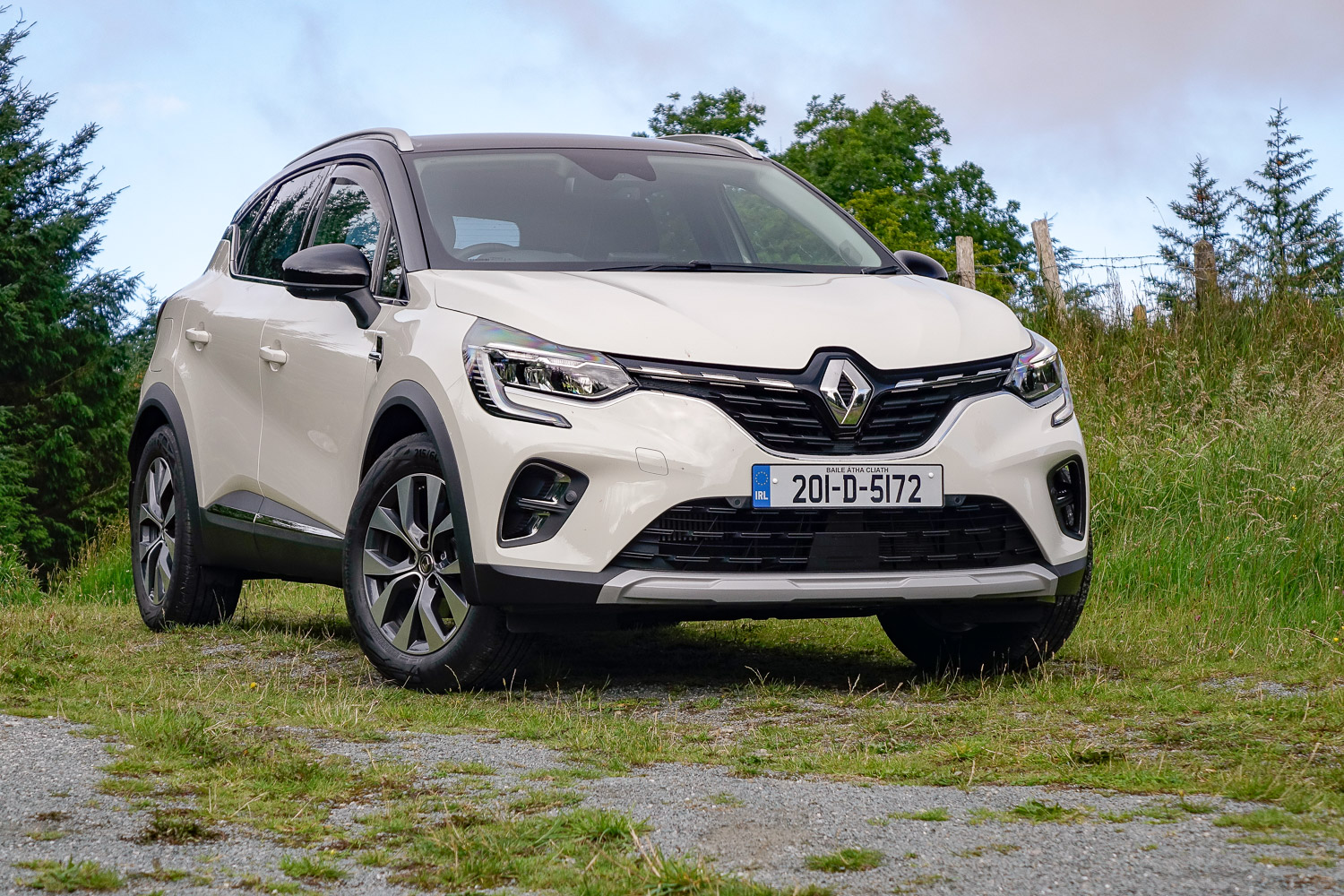Toyota's new Yaris Cross leverages the recognition and trust inherent in the Yaris name, and adds to it more practicality, a frugal hybrid powertrain and some sharp styling touches. We've driven it ahead of its on-sale date in Ireland this October.
In the metal
To look at, you'd never guess that the new Yaris Cross is actually a slightly larger car than the original 1995 Toyota RAV4. As an example of just how big even supposedly small cars have become, this crossover with a Yaris badge is 4.1 metres long and 1.5 metres tall.
It also bears some visual similarity to the current, even larger, RAV4 (check out the relationship between the rear pillar and the brake lights to see the clearest link), but in keeping with the Yaris name, the 'face' of the car is softer, cheekier and more friendly looking than that of the RAV4. Actually, there's a touch of similarity to that original 1995 RAV4, and more than a hint of Pokémon character about it, especially in the distinctive 'Brass Gold' paint of our test car.
There are some rather nice details, too, such as the castellated roof, the fake air vents in the bumper (which are the homes for the LED indicators and which help to disguise the car's overall height at the front) and the neat little 'Yaris Cross' badge built into the dark plastic cladding along the bottom of the doors. All in all, it looks very neat and purposeful, especially with the optional contrast black roof, while top-spec 'Adventure' models come with some rather attractive off-road-ish roof bars and extra side body cladding.
Inside, there is, again, a clear close relationship to the Yaris hatchback - the overall shapes and for want of a better word, themes of the interior are almost a direct lift from the smaller car, but the cabin of the Yaris Cross is in fact quite different. It feels better built for a start, especially with the nice tweed-cloth door trim of our test car, in Sol specification.
The standard Yaris hatch is hardly lacking in quality, but subjectively (and in this higher specification) the Yaris Cross looks and feels much more expensive inside. There's a helpful storage tray built into the dash, just beneath the standard-fit touchscreen, and another big stowage area just in front of the gear selector.
That houses both the primary USB socket for connecting your phone and also a wireless phone charging pad on higher-spec models. Disappointingly, beneath your arm there is only a shallow storage tray in the front-seat armrest, not a deep storage bin as provided by most rivals.
In the back seats, space is adequate rather than cavernous - certainly, a Skoda Kamiq or Renault Captur has more rear kneeroom, although headroom in the Yaris Cross is good.
The Yaris Cross' trump card, though, is its boot. With 397 litres of space with the rear seats up, it's Toyota's most practical model in the price bracket as it has fractionally more boot space than the more expensive C-HR crossover, and a lot more than an equivalently-priced Corolla hatchback (although the Corolla Saloon and the underrated Corolla Touring Sports estate both beat it for luggage capacity).
The Yaris Cross' boot is cleverly designed, too - not only is there a 40:20:40 split-folding rear seat, but the adjustable boot floor has two separate adjustable sections, allowing you to create two areas with differing depths to keep luggage and shopping apart. There are also optional stretchy 'seatbelts' that clip into the side panels and which can keep larger objects from sliding around.
Given the Yaris Cross' price point, and its impressive practicality, it's likely to give prospective Toyota buyers quite a lot to think about when weighing up its prospects relative to a Corolla and C-HR.
Driving it
The Yaris Cross carries over the same 1.5-litre three-cylinder petrol hybrid powertrain setup as seen in the standard Yaris hatchback. With only 116hp on offer, you might assume it to be underpowered, and the 11.2-second 0-100km/h time might reinforce that worry. Worry not; it's not the quickest thing on the road, but once you're rolling, the extra torque of the electric motor (141Nm) helps to keep the Yaris Cross flowing nicely along, and while it never actually feels fast (not even the optional four-wheel-drive AWD-i model manages that, in spite of its extra electric motor driving the rear wheels), it's absolutely fine.
Accelerate hard and the three-cylinder engine sings loud and proud as the CVT gearbox tries to juggle the needs of acceleration and efficiency. It's not too bad in this respect - Toyota's fourth-generation hybrid setup is far better at not wrecking your head with endless revving than were earlier efforts - but it can be a touch raucous at times. Better to accelerate a little more gently and let the torque do the work. Once up to main-road cruising speeds, the Yaris Cross is nicely refined, albeit with a slightly firm, somewhat stiff ride quality at times.
What's truly impressive is the Yaris Cross' fuel economy. This needs the caveat that our test drive took place in Belgium, near Toyota Europe's HQ in Brussels. Not only was the route unquestionably chosen by Toyota to show off the Yaris' economy to best effect, but the roads near Brussels also have lower speed limits on average than an equivalent Irish road, and they're ruthlessly enforced, too.
Even with all that in mind, a return of 3.7 litres per 100km on our test drive is really good - that's better than 70mpg in old money, and that from a large-ish, family-friendly car (try getting that kind of economy out of that original 1995 RAV4...).
If most of your mileage is in-town work, Toyota claims that the Yaris Cross will spend 80 per cent of its driving time running in zero-emissions electric mode. A pie-in-the-sky claim? Maybe not - with a bit of dual-carriageway driving and without us making any special efforts in regard to economy, we managed to score a 67 per cent electric running average on our test drive. To put that in perspective, a basic Yaris Cross is priced some €4,000 cheaper than its nearest equivalent all-electric rival model, and you don't have to worry about charging it up on longer journeys.
Does that make it, actually, a better choice for those seeking to reduce their motoring CO2 emissions? It is, at the very least, a debatable point... After all, the electricity that drives the car in zero-emissions mode is ultimately generated by the fuel in the tank.
In driving terms, the Yaris Cross apes its larger brother, the RAV4. How so? Because although the RAV4 isn't, in any sense, a truly rewarding driver's car, it is - somehow - satisfying to drive. The Yaris Cross pulls off the same trick. In spite of steering that's entirely artificial in its feel, and which is quite light, the Yaris Cross never fees anything less than pleasantly solid, and reassuringly planted, on the road. It's not fun, per se, but it's still decent to drive, a fact helped by comfortable, supportive front seats and good all-round visibility.
What you get for your money
A basic €27,260 Yaris Cross Luna model comes with 16-inch alloy wheels, an eight-inch infotainment touchscreen, part-digital instruments, Apple CarPlay, Android Auto, a reversing camera, automatic air conditioning, adaptive cruise control and a full suite of safety equipment including a pre-collision system with automated emergency braking, road sign recognition and steering that both helps to keep you in your lane and which can help you with sudden, emergency manoeuvres, too.
Our Sol-spec test car, which is priced from €32,400, comes with a contrast black roof, 18-inch alloy wheels, part-leather upholstery, heated front seats, front and rear parking sensors, and - crucially - the latest nine-inch infotainment touchscreen.
This screen (unlike the eight-inch screen of lesser Yaris Crosses) comes with Toyota's latest generation of infotainment software known as TAS600. This is a massive leap forward from the older Toyota Touch software, with graphics that - at long last - look bang up to date, and a menu system that makes sense and is easy to use. Better yet, it comes with always-on internet connectivity for live traffic, parking and navigation services, along with wireless connections for Apple CarPlay and Android Auto. Toyota really needs to roll this out to its other models, and fast.
There will also be a €29,500 Luna Sport model with a contrast roof, 17-inch alloys, LED headlamps and a six-speaker stereo. At the top of the range sits the off-road-ish €33,730 Adventure model, which comes with 18-inch alloys, part-leather seats, a head-up display and some extra off-road style body add-ons.
Summary
It's a touch on the pricey side and you only get one engine choice. Nonetheless, the new Toyota Yaris Cross comes across as one of the most convincing cars in the whole compact crossover class. It looks smart, inside and out; it should have the expected bullet-proof Toyota quality; it's not at all bad to drive; and it's exceptionally economical. It's also one of the most practical cars in its class. It'll sell like gangbusters; you mark our words. The only remaining question is how much damage it might do to sales of both the C-HR and the evergreen Corolla.

























